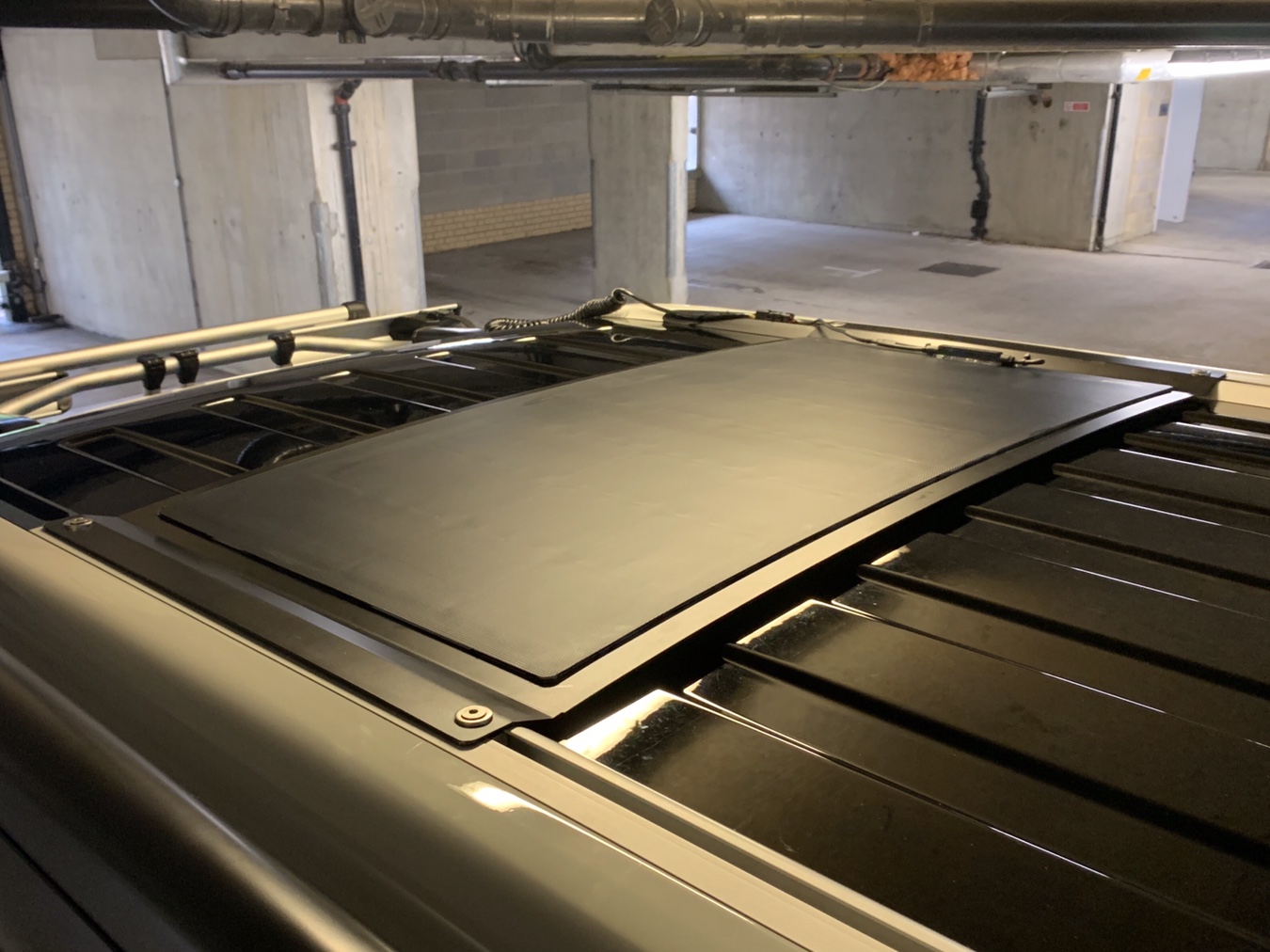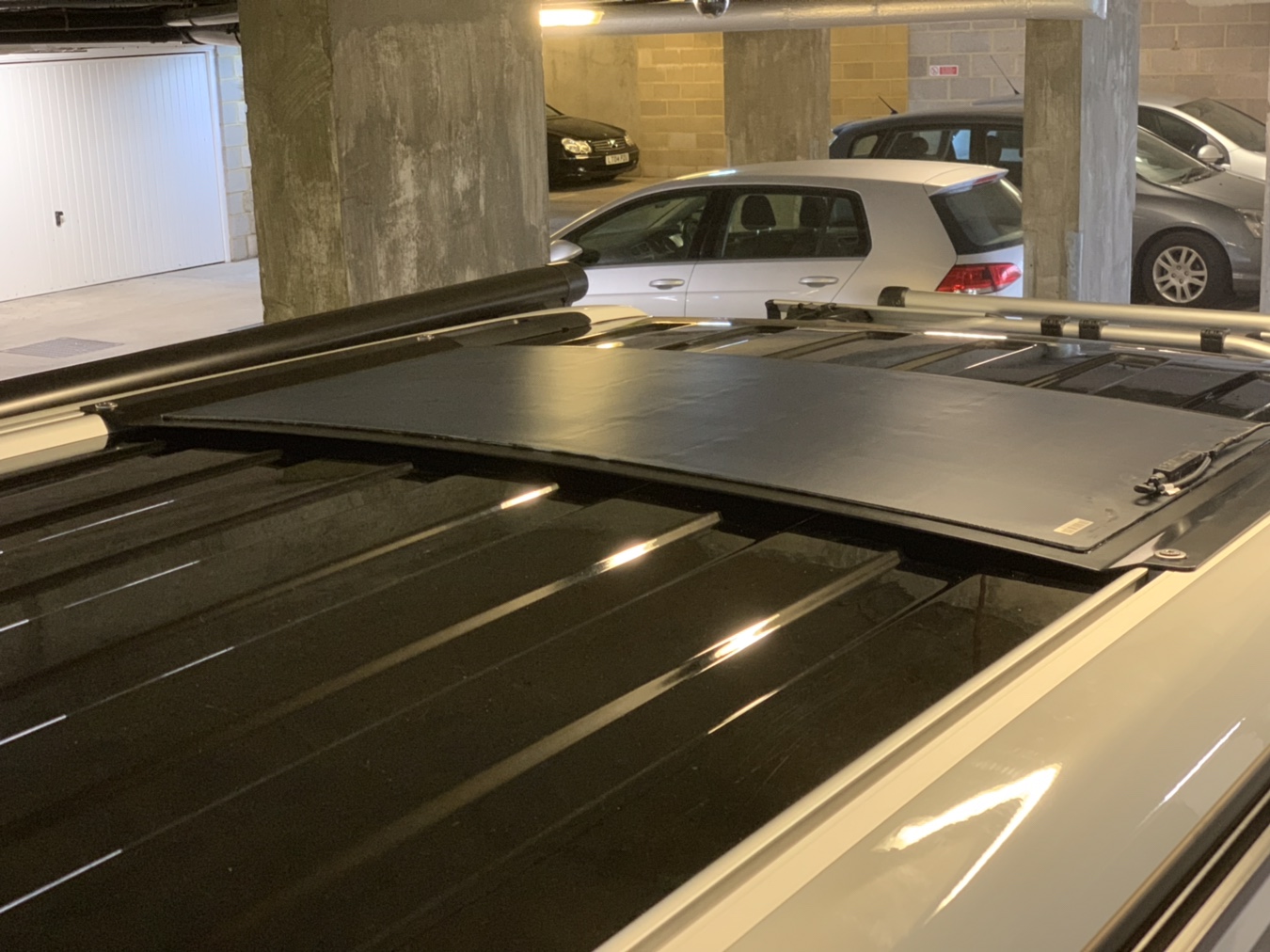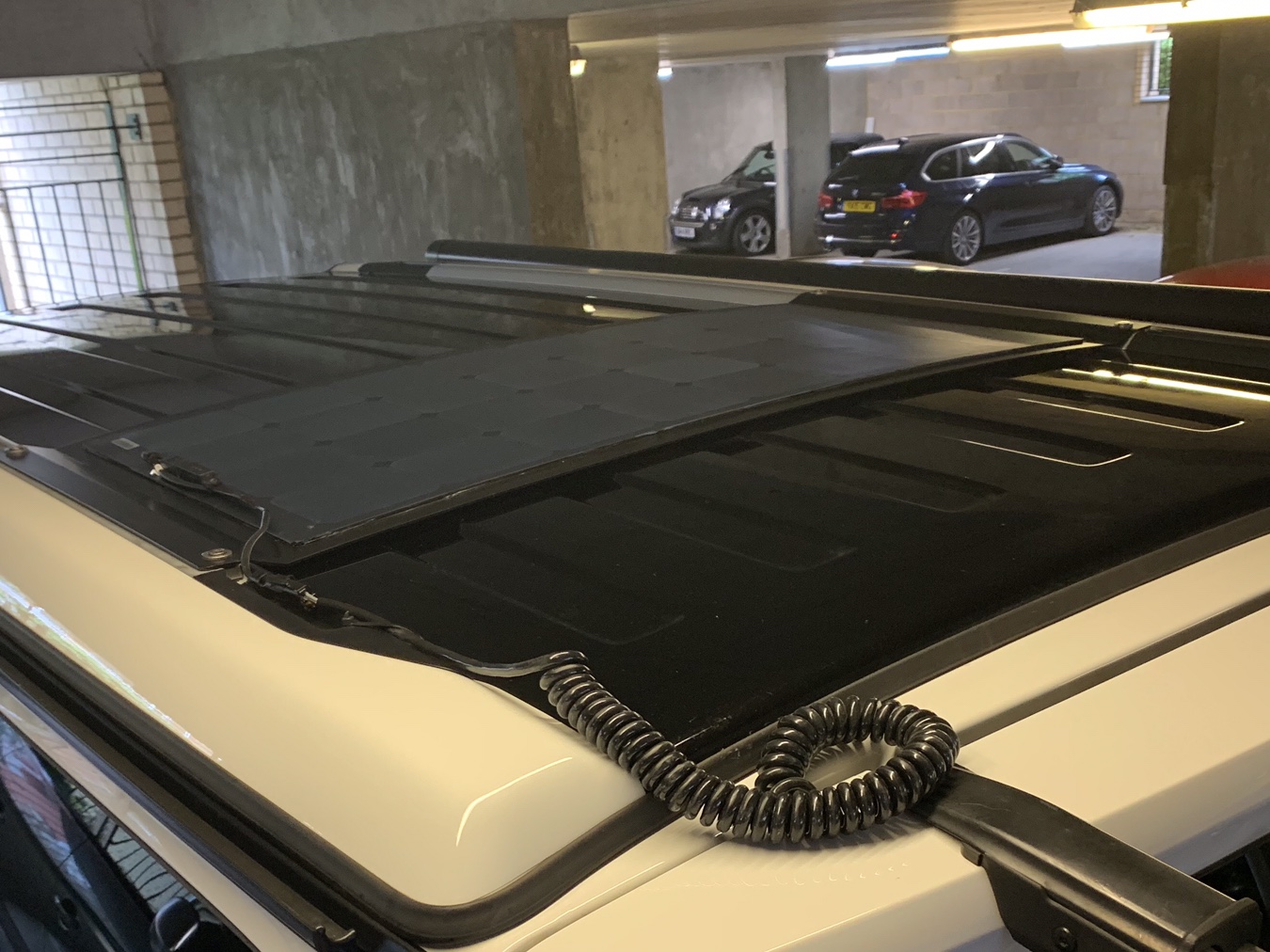MattBW
Here to help
Super Poster
Lifetime VIP Member
It is a lovely setup I agree entirely, and when I saw it was instantly interested. I do think 300+ for a powder coated metal plate is expensive enough to put me off going for it though.
For a mo thete i thought you were going to say at 180 mph WOWI can report no noticeable wind noise on a 180 mile round trip this weekend.
Sent from my iPad using Tapatalk
Just installed my all black 110w Solar panel - Thanks Roger at Solar Camper Solutions for your patience with my questions and such comprehensive instructions.
I THINK it works but it’s absolutely tipping down so not much anything is being generated!
I made a template and had a local company make the aluminium plate for me. I just need to tidy the wires (clips arriving tomorrow) and make sure nothing falls off.



Sent from my iPad using Tapatalk
Hi thereThanks. No - the panel IS already on it - it’s an all black panel mounted on a black plate.
I’ve got some self adhesive clips arriving tomorrow to tidy the roof cables and I need to secure the charger which is just resting in the jack compartment at the moment - I’m going to use Heavy Duty Velcro for that but leaving a gap behind it for cooling.
S
Sent from my iPhone using Tapatalk
Hi there
Where did you get the curly cable? I know Roger supplies them but only to his customers. Like you I did my own thing but have no idea where or indeed what to buy. Your help would be much appreciated.
David
Thanks, I will have to ask him very nicelyHi David, I bought all of the electrical stuff from Roger (the ‘stick on’ kit. I only had the mounting plate made up. The curly cable was from Roger.
Sent from my iPad using Tapatalk

This is one of the neatest set-ups I’ve seen so far! Since solar is my next big project I’d be interested in the costs for two Ali panels & fixings too. So much better than the angled metal “frames” I’ve seen.
Gentlemen, there are several reasons we use aluminium angle, and not a flat plate.
1) Heat - using angle leaves the underside of the panel sitting above the roof, with a significant air gap. This allows the panels to run more efficiently (voltage drops with heat) and live a much less stressful life.
2) Adhesive. Unless you stick panels onto a flat surface exactly right, you create air pockets which eventually break the panel when the air gets hot and expands.
3) Cost - it adds a significant cost to the kit. Significant enough that it moves the kit price up an extra £100 ish
4) Height - it only adds 12.5mm to the peak roof height, which is still lower than the VW awning.
5) Rigidity - the angle adds the rigidity we require for the panel not to vibrate and to be held down very firmly against the roof.
We now use very thick (for "flex" panels) aluminium core reinforced panels which are substantially tougher than regular flex panels (as in Altvic's picture above). These are the very best (and the most expensive) panels we can find. We have switched due to too many failures of the thinner panels, due to heat expansion and contraction fatigue (we assume - when a panel fails , often the voltage drops to half, and panels are made in two electical halves).
This is why we build the kits as we do, and not copy the Swiss version. Our extensive experience has taught us what is the most robust, last the longest, and is the easiest to swap out in the event a replacement is needed.
Also, as all of my customers will attest, if they have a panel failure out of warranty, we will replace it at a touch over cost price, frame and all. This, is not something any other panel suppliers will do for you.
I don't sell curly cords to non-existing customers as they are very time consuming and fiddly to make, and we make very little profit on them. They are a value extra for customers ordering kits, or existing customers wanting an upgrade, as part of our service. This is the same as our MPPT charger upgrades, we make no money on them, we pass on our trade cost for the upgrades.
Thanks for the explanation of the progressive development of your system. Both helpful & re-assuring so much consideration is given to the individual components and “after-care”. One tiny gripe re your reply, some Cali owners, including this one, are female!Gentlemen, there are several reasons we use aluminium angle, and not a flat plate.
1) Heat - using angle leaves the underside of the panel sitting above the roof, with a significant air gap. This allows the panels to run more efficiently (voltage drops with heat) and live a much less stressful life.
2) Adhesive. Unless you stick panels onto a flat surface exactly right, you create air pockets which eventually break the panel when the air gets hot and expands.
3) Cost - it adds a significant cost to the kit. Significant enough that it moves the kit price up an extra £100 ish
4) Height - it only adds 12.5mm to the peak roof height, which is still lower than the VW awning.
5) Rigidity - the angle adds the rigidity we require for the panel not to vibrate and to be held down very firmly against the roof.
We now use very thick (for "flex" panels) aluminium core reinforced panels which are substantially tougher than regular flex panels (as in Altvic's picture above). These are the very best (and the most expensive) panels we can find. We have switched due to too many failures of the thinner panels, due to heat expansion and contraction fatigue (we assume - when a panel fails , often the voltage drops to half, and panels are made in two electical halves).
This is why we build the kits as we do, and not copy the Swiss version (and for ethical reasons). Our extensive experience has taught us what is the most robust, last the longest, and is the easiest to swap out in the event a replacement is needed.
Also, as all of my customers will attest, if they have a panel failure out of warranty, we will replace it at a touch over cost price, frame and all. This, is not something any other panel suppliers will do for you.
I don't sell curly cords to non-existing customers as they are very time consuming and fiddly to make, and we make very little profit on them. They are a value extra for customers ordering kits, or existing customers wanting an upgrade, as part of our service. This is the same as our MPPT charger upgrades, we make no money on them, we pass on our trade cost for the upgrades.
Thanks for the explanation of the progressive development of your system. Both helpful & re-assuring so much consideration is given to the individual components and “after-care”. One tiny gripe re your reply, some Cali owners, including this one, are female!
Ammended
Nice and very neat indeed. Just one question though to anyone with the pig tail lead: Does it flap about and make a noise when on the move?Just installed my all black 110w Solar panel - Thanks Roger at Solar Camper Solutions for your patience with my questions and such comprehensive instructions.
I THINK it works but it’s absolutely tipping down so not much anything is being generated!
I made a template and had a local company make the aluminium plate for me. I just need to tidy the wires (clips arriving tomorrow) and make sure nothing falls off.



Sent from my iPad using Tapatalk
I've had a Roger solar fitted for a few years. Haven't ever plugged it in to top up and haven't been to a site in ages.ah ok thanks. Do you guys still bother to plug in to top up before a trip even when you have solar?
it's a bit tedious for me as I live in an apartment block so I have to borrow an adaptor with a round pin to plug in an extension lead to drag across the underground car park and hook up - have to do it late at night too so there's less chance of anyone a) tripping over it and b) complaining.
I've worked out though, that it probably costs less than 3 pence to top up the last 20% of the leisure battery ... I'm ready for that at the next residents meeting. In my mind's eye, it get's brought up under 'Any other business' - I nonchalantly toss the frowning committee 50 pence to cover the whole year and say - "get yourself something with the change...", my spurs clinking as I walk out...... 3-2-1 I'm back in the room. Kiddin obviously.
Nice and very neat indeed. Just one question though to anyone with the pig tail lead: Does it flap about and make a noise when on the move?
Hi s2bear,Just installed my all black 110w Solar panel - Thanks Roger at Solar Camper Solutions for your patience with my questions and such comprehensive instructions.
I THINK it works but it’s absolutely tipping down so not much anything is being generated!
I made a template and had a local company make the aluminium plate for me. I just need to tidy the wires (clips arriving tomorrow) and make sure nothing falls off.



Sent from my iPad using Tapatalk

The VW California Club is the worlds largest resource for all owners and enthusiasts of VW California campervans.

